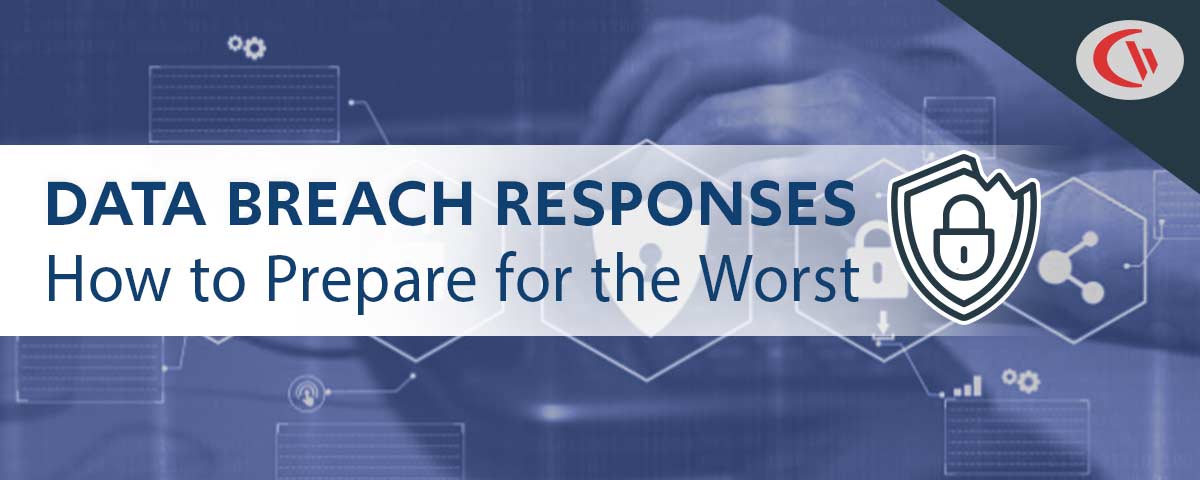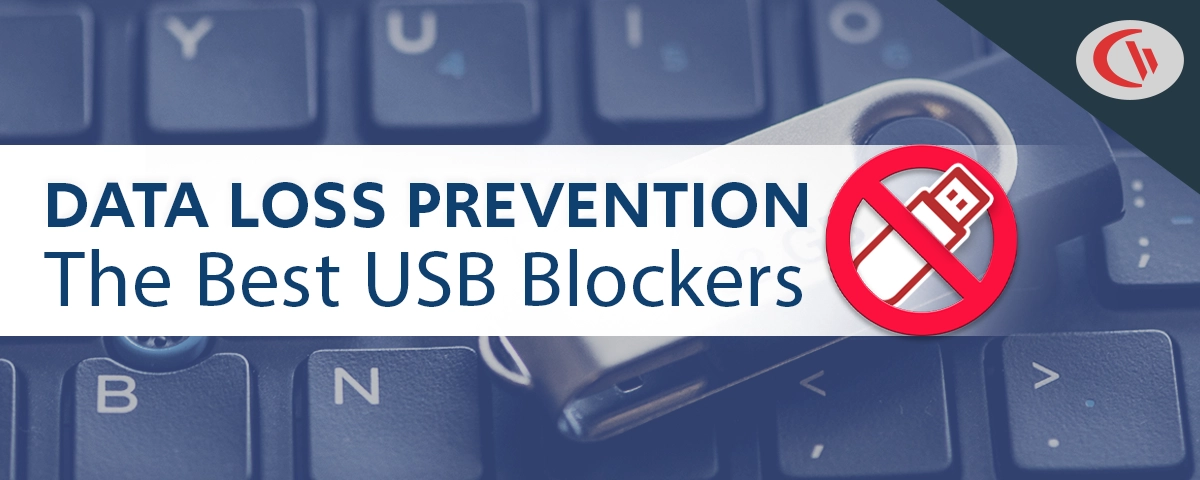How to Build a Data Breach Response Plan

Businesses of all shapes and sizes can fall victim to data breaches. Unfortunately, even with the best privacy and security measures in place, hackers are continually becoming more skilled at beating them.
A well designed and implemented data breach response plan is essential if businesses are to minimize the effect of data breaches and protect their reputation. Not only that, but they can reduce the financial damage to the business and better position the organization for recovery.
Ultimately, a data breach response plan should enable organizations to recover from data breaches quickly and with the least amount of money spent, all with little or no damage to their reputation.
Improve Productivity & Security With CurrentWare
Take back control over productivity and security with CurrentWare’s cybersecurity, web filtering, data loss prevention, and user activity monitoring solutions. Reach out to us today to book a custom demo, or download the free trial to get started right away.
What Is A Data Breach Response Plan?
A data breach response plan is not about detecting or preventing data breaches. It is a document that outlines how the organization will respond in the aftermath of a cybersecurity incident. A data breach response plan indicates what constitutes a data breach or security incident, the steps to be taken in case of a breach, and who is involved in the plan.
Sample Data Breach Response Plan: Lost USB Drive with Sensitive Data
Need a cybersecurity incident response plan? Check out this template from the Government of Canada.
1. Incident Detection and Reporting
- Identify the loss: Document the date, time, and location where the USB drive was last seen.
- Data classification: Identify the type of sensitive data stored on the drive (e.g., Personally Identifiable Information (PII), financial data, intellectual property).
- Report the incident: Report the lost USB drive to a designated internal contact person or team (e.g., IT Security, Data Protection Officer).
2. Assessment and Containment
- Evaluate risk: Assess the severity of the potential harm if the data falls into the wrong hands. Consider the data type, number of individuals affected, and potential for misuse.
- Change passwords: If any login credentials or access keys were stored on the drive, require affected users to change their passwords immediately.
3. Notification and Communication
- Legal requirements: Determine if data breach notification laws apply based on the data type, location, and number of individuals affected. Consult with legal counsel to ensure compliance with relevant regulations (e.g., GDPR, HIPAA).
- Notification plan: Develop a communication plan to notify affected individuals about the incident. The notification should explain the nature of the breach, the data potentially involved, steps being taken to mitigate risk, and recommendations for the individuals (e.g., credit monitoring).
- Internal communication: Inform relevant internal stakeholders (e.g., senior management, affected departments) about the incident and the response plan.
4. Investigation and Remediation
- Investigation: Attempt to locate the lost USB drive. Review USB activity logs for any suspicious activity related to the lost device.
- Preventative measures: Review existing data security practices and implement improvements to prevent similar incidents in the future. This might include:
- Enforcing strong password policies and data encryption for portable storage devices.
- Implementing data access controls and user training programs.
- Regularly backing up sensitive data.
Further Reading: USB Drive Security Best Practices
5. Documentation and Review
- Document the incident: Maintain a record of all actions taken throughout the response process.
- Review the response: After the incident is resolved, conduct a review to identify areas for improvement in the data breach response plan.
Additional Considerations
- Credit monitoring: Depending on the type of data involved, you may want to offer credit monitoring services to affected individuals.
- Law enforcement: If there is evidence of criminal activity related to the lost USB drive, report the incident to law enforcement.
Remember: This is a sample plan and may need to be adapted based on your specific circumstances and applicable data protection regulations.
Why Is A Data Breach Response Plan Important?
Without an effective data breach response plan, you can expect significant damage to your reputation, your finances, and your operations. The loss of customer data, business secrets, or intellectual property can be catastrophic for your business, so it’s important to take the proper steps to minimize these effects.
Enhances Preparedness And Resilience Against Cyber Threats
Data breaches come without warning, and it is important to be prepared for one to occur at any time. A proper response plan outlines a clear process to be followed in the event of a cyber-attack.
These plans can (and should) be updated as lessons are learned from each incident, or if legal requirements change. This will make your business more resilient against cyber threats in the future.
An incident response team can follow the plan step by step, remaining confident that they are prepared to respond in an effective manner.
Reduces Business Downtime And Financial Losses
With any data breach on your organization, there will inevitably be some effect on your operations. However, with a proper response plan, you can significantly reduce business downtime as well as financial losses.
Consider a business that is victim to a data leak with little or no plan in place to respond. Think of the panic, the frantic calls, and the urgent meetings to formulate a plan. Compare this to a business with a data breach response plan. When they discover there has been a breach, they are prepared and can consult and implement the plan with immediate effect.
Which business will suffer the most? The answer is easy – failing to prepare for a data breach can have significant consequences for your business.
Maintains Customer Trust And Minimizes Reputational Damage
You might think that recovery from a data breach is all about restoring data and getting back to normal operations. While that’s definitely important, it isn’t the only purpose of a data breach response plan.
The way in which a business responds to a breach can hugely impact their reputation. In order to maintain customer trust and minimize reputational damage, it’s essential to plan for how you will address customer queries or complaints about the breach.
Improves Compliance With Data Protection Laws And Regulations
Proper preparation includes compliance with necessary data protection laws and regulations. A response plan with clear procedures allows organizations to show regulators that the breach was dealt with correctly.
The Role of Digital Forensics and Incident Response (DFIR) in Data Breach Response
A comprehensive data breach response plan often incorporates Digital Forensics and Incident Response (DFIR) practices. DFIR plays a critical role in identifying, containing, and mitigating the impact of cyber incidents. When a breach occurs, forensic investigators can analyze digital evidence to determine the scope of the attack, identify the root cause, and prevent similar incidents in the future.
DFIR professionals are also essential in ensuring that organizations adhere to regulatory requirements. By documenting evidence and maintaining a clear chain of custody, they help demonstrate compliance with data protection laws during post-incident audits. This can be invaluable for avoiding fines and maintaining trust with customers and stakeholders.
Case Study
Viking Yachts Stops an Employee From Stealing Their Intellectual Property

As Viking Yachts grew, their network administrator Vincent Pecoreno was responsible for supporting over 530 users and 1500 devices across multiple geographic locations, making visibility a challenge without the right tools in place.
Once equipped with CurrentWare’s user activity monitoring and data loss prevention solutions, Viking Yachts had the insights they needed to protect their sensitive data.
Read their case study to learn more about how Vincent used CurrentWare to detect a data theft attempt from a soon-to-be-ex-employee.
Steps To Develop A Data Breach Response Plan
So, now you know what a data breach response plan is and why they are so important for organizations of all types. But how exactly do you build a data breach response plan for enhanced security?
In this section, we will look at the steps you can take to protect your business with a comprehensive plan.
Assemble A Cross-Functional Response Team
Firstly, decide who will form the data breach response team. In most cases, the team will be made up of employees with other roles in the organization. Their participation in the response team is only required during a data breach incident, but it is essential that they are committed to the role and any ongoing training it requires.
It’s crucial for members of your data breach response team to know your business inside and out, as their knowledge can drastically influence the effectiveness of the response.
Ensure your cross-functional response team is made up of representatives from across your organization. This might include executive team members as well as employees from departments such as HR, legal, or marketing.
The plan should clearly set out the name of each member of the team, their contact details, and their role in the response plan.
Conduct A Thorough Risk And Vulnerability Assessment
Before writing a data breach response plan, it’s important to conduct a thorough risk and vulnerability assessment. Consider possible cyber-attack scenarios, including what areas may be affected, and define exactly what would trigger the data breach response plan.
Proactive risk management is a critical component of compliance with cybersecurity frameworks such as ISO 27001. As part of your risk assessment, it is also useful to know exactly who has access to important and sensitive data. This helps you see where possible vulnerabilities lie.
When assessing risk and vulnerability, it can be helpful to conduct technology risk mitigation. What is technology risk mitigation? It’s the process of identifying, assessing, and reducing risks associated with the technologies adopted within your organization.
Classify Your Stored Data Based On Sensitivity
While any data breach can leave your organization vulnerable, some data is more sensitive than others, such as medical data in hospitals or student data in educational institutions.
As part of your data breach response plan, you can classify your data based on sensitivity, as well as considering which data may need an immutable backup.
For example, you could classify your data under the following categories:
- Public
- Private
- Internal
- Confidential
- Restricted
- Archived
Having clearly defined categories for data can help you decide what action is required if a data breach takes place.
Develop A List Of Potential Data Breach Scenarios
A useful step in creating a data breach response plan is to develop a list of potential scenarios. In doing so, you can define what type of data breach requires a response plan.
Some possible security incidents include:
- Loss/theft of a laptop or USB drive with unencrypted sensitive data
- Ransomware attacks
- Falling for phishing attacks
Outline Detection And Containment Procedures
Outlining your detection and containment procedures is arguably the most important part of a data breach response plan. Due to the impact a data breach can have on your organization, it’s essential to be able to detect security incidents quickly and effectively.
You can use tools like Data Loss Prevention software to monitor and detect suspicious behavior.
Of course, after detection comes containment. This phase involves ensuring the security threat is contained in order to prevent further damage to the business. Gathering as much information about the incident is essential, and will be useful in future if legal proceedings become necessary.
Establish Clear Communication Channels And Protocols
A major part of an effective data breach response plan involves communicating the event to the necessary stakeholders. That means creating a communication plan with pre-prepared statements to share with staff, customers, and the media.
Of course, your communications plan will need to be adapted on a case-by-case basis, but a general statement gives you somewhere to start in the midst of a cyber-attack.
Think carefully about the timing of your communications. You don’t want to prematurely announce there has been a breach before you have all the information. Equally, you want to act quickly enough to avoid the news spreading through other channels which are outside your control.
Consult appropriate privacy and security regulations to ensure your communications protocols are fully compliant and meet any legal requirements. For example, if personal information has been stolen, make sure you inform anyone who has been affected.
Outline A Plan For Remediation And Recovery
The recovery phase of the response plan is about getting your business operations back on track. Once you’ve detected a threat or attack, the appropriate team can get to work on remediating the threat. For example, the first step may be to make a conference call using your VoIP service to update relevant team members and make a plan for next steps.
By communicating with your team and understanding the type of cyberattack you have fallen victim to as well as the source of the breach, you’ll be able to make appropriate adjustments to your security strategy to prevent breaches in the future.
Periodically Review And Update The Response Plan
Building an effective data breach response plan is an ongoing process. It is not something that should be completed and only looked at when an-attack occurs. As privacy and security regulations are continually evolving, your response plan should be regularly reviewed and updated.
Test your response plan regularly, ensure relevant members of your team take part in training, and check they understand their responsibilities within the plan. If and when you fall victim to a data breach, ensure you evaluate the response and amend the plan with any lessons you have learned.
Conclusion
Taking charge of your cybersecurity with Aa data breach response plan is essential in today’s world. In order to recover from a data breach, preparation is crucial.
Whether your business has suffered a data breach or you want to proactively minimize the chances of falling victim to one one, follow the steps outlined in this article to begin building a data breach response plan for enhanced security today. Assembling a response team, employing sophisticated detection and containment procedures, and outlining a plan for remediation are some of the essential steps you can take today to protect your organization in the future.
About the Author
Diana Nechita
Diana is the Director of Product Marketing at Ardoq. Her passion lies in fostering a deep understanding of Ardoq’s value in delivering tangible results for organizations navigating the complexities of digital transformation. Find her on LinkedIn.



